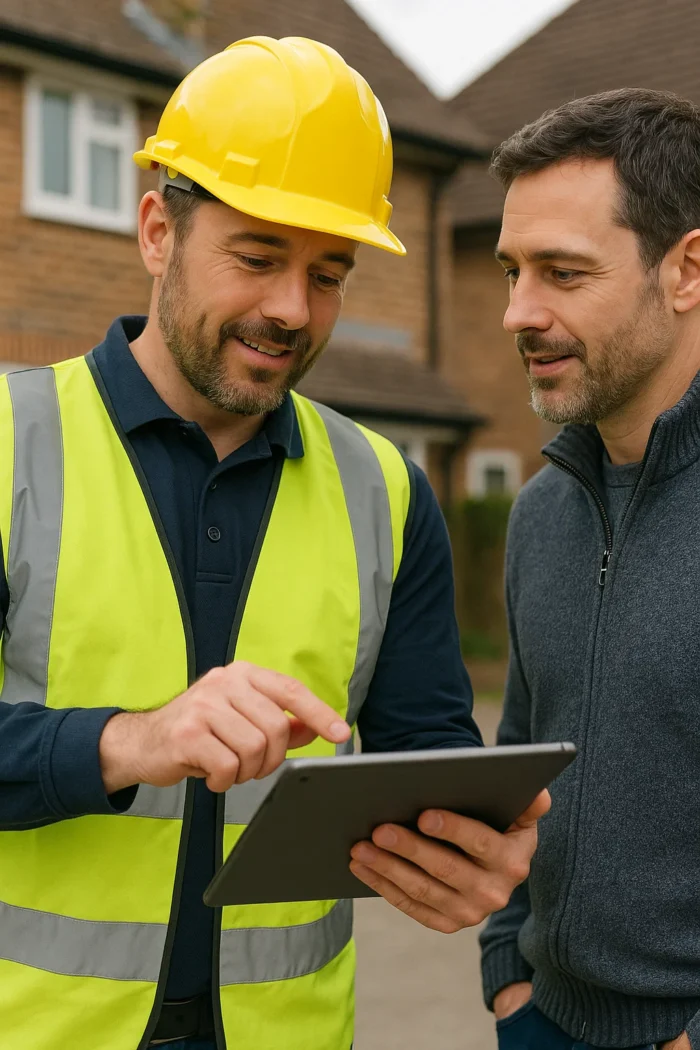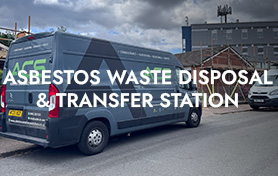The Future of Asbestos Management: How Technology is Changing the Game
Asbestos management has long been a crucial aspect of building safety, especially in older properties. While traditional methods of surveying and removal have served their purpose, the field is now seeing a significant shift due to advancements in technology. This post explores how emerging technologies are transforming the future of asbestos management, making it safer, more efficient, and more accurate.

The Challenge of Traditional Asbestos Management
Historically, asbestos management has relied on manual inspections, paper records, and often, assumptions based on building age. This approach has several limitations:
- Human error: Manual inspections can miss hidden asbestos or misjudge its condition.
- Data management: Paper records are prone to loss or damage and make tracking and compliance challenging.
- Slow response times: Delays in identifying and addressing asbestos can lead to significant risks.
How Technology is Revolutionising Asbestos Management
Fortunately, technology is providing innovative solutions to these challenges. Here are some of the key advancements:
1. Digital Asbestos Registers and Management Systems
Traditional paper-based asbestos registers are being replaced by sophisticated digital systems. These platforms offer several advantages:
- Centralised data: All asbestos-related information, including survey reports, removal records, and management plans, can be stored in one secure location.
- Real-time updates: Any changes or updates are immediately available to authorised personnel.
- Accessibility: Information can be accessed from anywhere, making it easier for contractors and site managers to stay informed.
- Improved compliance: Automated reminders and reporting tools help ensure compliance with regulations.
2. Mobile Technology for On-Site Inspections
Mobile apps are transforming the way asbestos surveys are conducted. These apps enable surveyors to:
- Record data digitally: On-site data can be directly entered into a tablet or smartphone, eliminating the need for manual data entry later.
- Capture photos and videos: Visual evidence of ACMs can be easily documented and linked to specific locations.
- Access building plans and historical data: Surveyors can quickly access relevant information on their devices.
- Generate instant reports: Reports can be created and shared immediately after the survey, speeding up the management process.
3. Advanced Imaging and Detection Technologies
Emerging technologies like thermal imaging and LiDAR (Light Detection and Ranging) are being explored for asbestos detection:
- Thermal imaging: Can identify areas where insulation might be present, potentially indicating the presence of asbestos.
- LiDAR: Can create detailed 3D models of buildings, making it easier to locate and map potential ACMs.
- AI and Machine Learning: Algorithms can analyse vast amounts of data to identify patterns and predict where asbestos might be present, even in less obvious locations.
4. Virtual Reality (VR) and Augmented Reality (AR) Training
Training for asbestos removal and management can be enhanced with VR and AR technologies:
- VR simulations: Provide immersive, realistic scenarios for training workers in safe asbestos removal procedures.
- AR overlays: Can display information about ACM locations and handling procedures directly on a worker’s view, improving safety and efficiency.
5. Remote Monitoring and Sensors
In the future, sensors might be deployed to monitor air quality and detect asbestos fibers in real-time:
- Early detection: Immediate alerts can be sent if fibers are detected, allowing for quick action to prevent exposure.
- Continuous monitoring: Provides ongoing assurance of safety in areas where asbestos is present.
The Benefits of Embracing Technology
Adopting these technologies brings numerous benefits:
- Increased safety: More accurate detection and real-time monitoring reduce the risk of exposure.
- Improved efficiency: Digital systems and mobile tools streamline workflows and save time.
- Enhanced accuracy: Advanced imaging and AI minimise the chance of errors.
- Better compliance: Digital records and reporting tools make it easier to meet regulatory requirements.
- Cost savings: Efficiency gains and reduced risks can lead to significant cost savings in the long run.
The Future of Asbestos Management: Conclusion
The future of asbestos management is undeniably linked to technology. By embracing digital tools, advanced imaging, and innovative training methods, we can create a safer and more efficient environment. For businesses and property owners, staying informed about these advancements is crucial for effective asbestos management and ensuring the health and safety of everyone involved.
At Asbestos Compliance Solutions, we embrace technology where possible and are always looking to innovate and improve our service using the technology available to us. Additionally, we have built custom software to help manage our clients and the work we do for them, and as technology continues to evolve, so too will our ability to manage asbestos management with greater precision and care.





